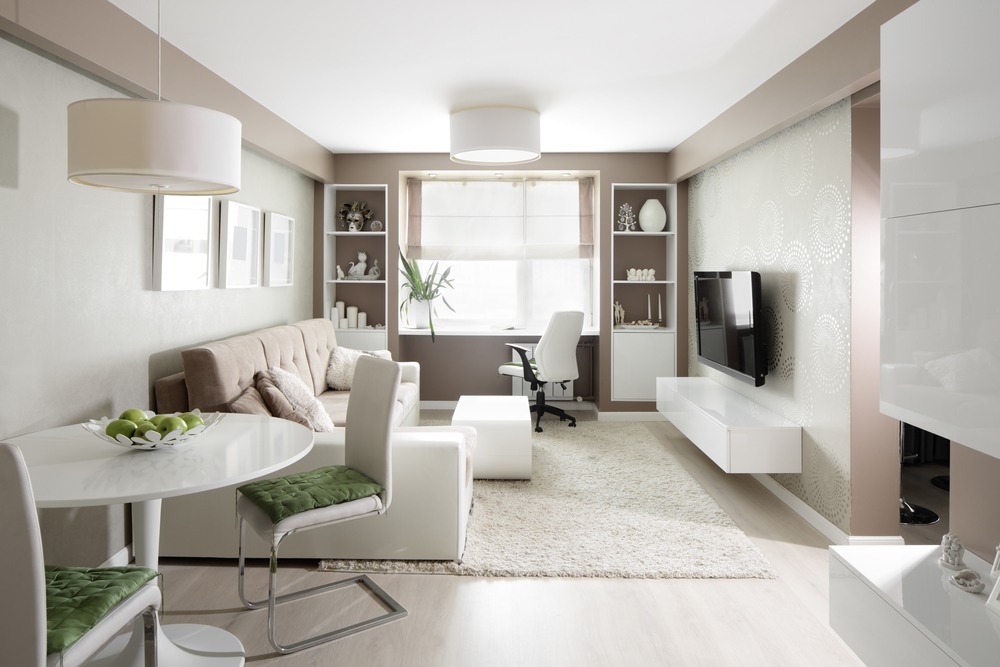COVID 19 Response. Learn more.
Now Leasing for the 2024-2025 academic year – Set up a tour today

Seeking out a furnished apartment makes moving a quick, simple process. These apartments are especially convenient for college or university students, as the quick move-in works well for busy schedules. Plus, this arrangement provides furniture for students who may not be able to afford it.
Of course, furnished apartments do have their advantages and disadvantages. While the pros certainly outweigh the cons, understanding the disadvantages can help you make an informed decision. Explore the considerations every student should know about renting a furnished apartment below.
As their name suggests, furnished apartments generally come with furniture. They can either be partially or fully furnished. Student apartments are usually fully furnished, with furniture for the living room and bedroom, as well as kitchen appliances, window treatments, bathroom accessories, and lighting. With these features come some additional benefits, discussed below.
Simplified Moving: An apartment with furniture eliminates the need for a moving truck and heavy lifting. It also eliminates the need to arrange any furniture after it’s moved. Therefore, you can save time and labour, making your move faster, smoother, and less stressful.
Flexibility for Students: Furnished apartments are usually short-term rentals, which works perfectly for most students. If you move back home or travel during the summer, keeping your apartment can quickly become expensive and inconvenient. Most furnished apartments offer flexible leases to accommodate student life, such as the student housing near Niagara College and Brock University offered by Regent Student Living. These short-term leases allow you to move out and back in as needed.
Savings: A furnished apartment offers instant savings. Since you won’t need to buy furniture, renting a furnished apartment significantly reduces upfront costs. This could leave you with extra money for purchasing other important products and services. You could also apply your savings to a security deposit, or hold onto them for a rainy day.
While the cons of renting a furnished apartment are greatly outweighed by the pros, knowing them will help you make the most appropriate decision for your needs. Here are some of the most common cons to consider.
Low-Quality Furniture: To save money and pass those savings on to students, some property managers may offer the cheapest furniture available. It could also be dated, or simply unsuited for your tastes or lifestyle. Some furnished apartments may also come with damaged, unstable furniture that is unsightly, dangerous, or impossible to use. Finally, irresponsible property managers may not properly maintain their apartments, leaving them with dirty, stained furniture.
Fortunately, this isn’t always the case. When you rent from Regent Student Living, for example, you’ll enjoy modern, quality furniture.
Fees for Damaged Furniture: If you damage furniture in a furnished apartment, you will be charged a fee. In some cases, you could incur charges for furniture that was damaged before you moved in. To negate this issue, simply document the condition of furniture upon moving in, and immediately report any damage to the landlord. This process can be daunting, but it could also protect you from fees or unfair practices later. Paying ‘damaged furniture fees’ could be expensive and even compromise your security deposit.
Higher Rental Costs: It’s no secret that furnished apartments cost more than unfurnished ones. Of course, this higher rent is associated with the furniture itself. Yet, for busy students who don’t have the money to invest in quality furniture, the convenience and upfront affordability of furnished units can be compelling features.